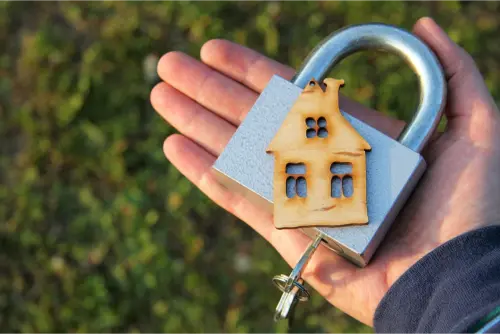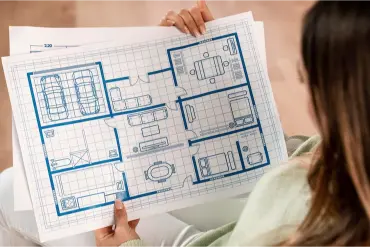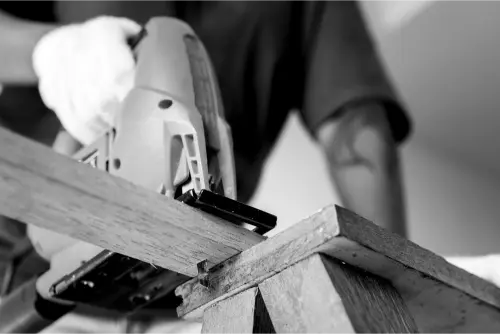

Summary: A kitchen gas detector spots leaks or carbon monoxide early and sounds a loud alarm so you can act fast. Pick the right type for your fuel, place it correctly, test it each month, and replace it when it expires. It is a small cost that adds real safety at home.
A busy kitchen has heat, noise, and smells. The risk you cannot see is a gas leak or carbon monoxide. A gas detector is a small device that senses gas and sounds an alarm before small issues turn into emergencies.
In Australian homes with LPG or natural gas appliances, a detector adds a simple but important layer of safety.
In this guide you will learn what a gas detector does, where to place one, how to keep it working, and how to choose the right unit. We also share a clear plan to follow if an alarm goes off.
There are two common risks around kitchens. One is a leak of combustible gas such as LPG or natural gas.
The other is carbon monoxide, which is produced when gas appliances burn poorly. Combustible gas can cause fire or explosion.
Carbon monoxide has no smell and can make people very sick. A gas detector can monitor for one or both, depending on the model.
A gas leak detector is designed to sense LPG or natural gas. A CO alarm is tuned to carbon monoxide. Some products combine both functions.
If your home has a gas cooktop, gas oven, or nearby hot water unit or heater, a CO alarm is a smart idea along with a combustible gas detector.
Detectors are not a set-and-forget device. They work best with regular servicing of your gas appliances.
Book a licensed gasfitter for routine checks and for any sign of trouble such as soot, yellow flames, or headaches during use.
These units sense the presence of gas in the air. They are common in homes that use bottled LPG or piped natural gas. Many models have a loud siren and a flashing light so you can act fast. Some include a digital readout.
CO alarms track the level of carbon monoxide. Good models can show the parts per million level, give a loud alarm, and store the highest reading.
Place them near sleeping spaces and near gas appliances, not inside bathrooms. If you have a garage under living spaces, a CO alarm can be useful there as well.
Some detectors connect to your home Wi‑Fi. They send alerts to your phone and can link with other smart devices.
This helps when you are out or if a family member needs alerts that flash or vibrate. Check that the app is supported in Australia and has regular updates.
You can choose plug-in, battery, or hardwired units. Plug-in models are easy to install, though they need a power point in the right position.
Battery units suit renters, since they leave no marks and can move with you. Hardwired units are neat and reliable, but they need an electrician and a suitable location.
LPG sinks towards the floor. Place an LPG detector lower on the wall, about 30 centimetres above the floor. Do not put it on the floor, inside a cupboard, or behind furniture. Give the sensor clear airflow.
Natural gas rises. Place a natural gas detector higher on the wall or on the ceiling. A common guide is about 30 centimetres below the ceiling if wall mounted, or on the ceiling at least 30 centimetres from any corner.
Avoid putting it right over the cooktop where steam and grease collect.
Avoid placing any detector near windows, rangehood outlets, ceiling fans, or vents. Moving air can dilute the gas and delay an alarm.
Keep detectors away from corners with poor airflow. Do not place them in bathrooms or very humid spots, since steam can affect sensors.
Keep a sensible distance from the cooktop to reduce false alarms from cooking fumes. If you have a gas hot water system or heater in a nearby room, consider an extra detector there.
Follow the maker’s instructions for minimum distances from appliances and junctions.
Every model has specific guidance. Read the manual and follow Australian rules for installation. If you are unsure about placement, ask a licensed gasfitter. This article is general information only.
Choose a model designed to detect the gas you use. For LPG or natural gas, look for a combustible portable gas detector with clear sensitivity ratings.
For CO alarms, look for models that meet recognised performance levels and give a loud, clear alarm.
Pick a unit with a siren that is easy to hear across your home. Many units also use flashing lights. Interlinked alarms are helpful in larger homes, since one alarm can trigger others.
Mobile alerts can be useful, especially if you travel or manage a property. Check if the app supports multiple users and has simple privacy settings.
Check the warranty, local support, and the relevant Australian standards listed by the maker. Buy from a trusted retailer who can help with returns. Keep the receipt and manual in a safe place.
Look for a clear test button, simple status lights, and a label where you can write the install date. A model that is easy to test is more likely to be tested on time.
We help homeowners across Melbourne and nearby suburbs with kitchen and bathroom renovations. Our team focuses on quality workmanship, clear updates, and fixed quotes.
We plan well, show up on time, and respect your home. For a closer look at layouts, finishes, and how we run projects, see our Kitchen Renovation service page.
Planning a kitchen refresh in Melbourne? At Liberty Builders, we coordinate licensed trades, keep communication clear, and hand over clean, safe spaces.
If you want practical advice on layout and safety, we can help. Let’s talk about your kitchen.






